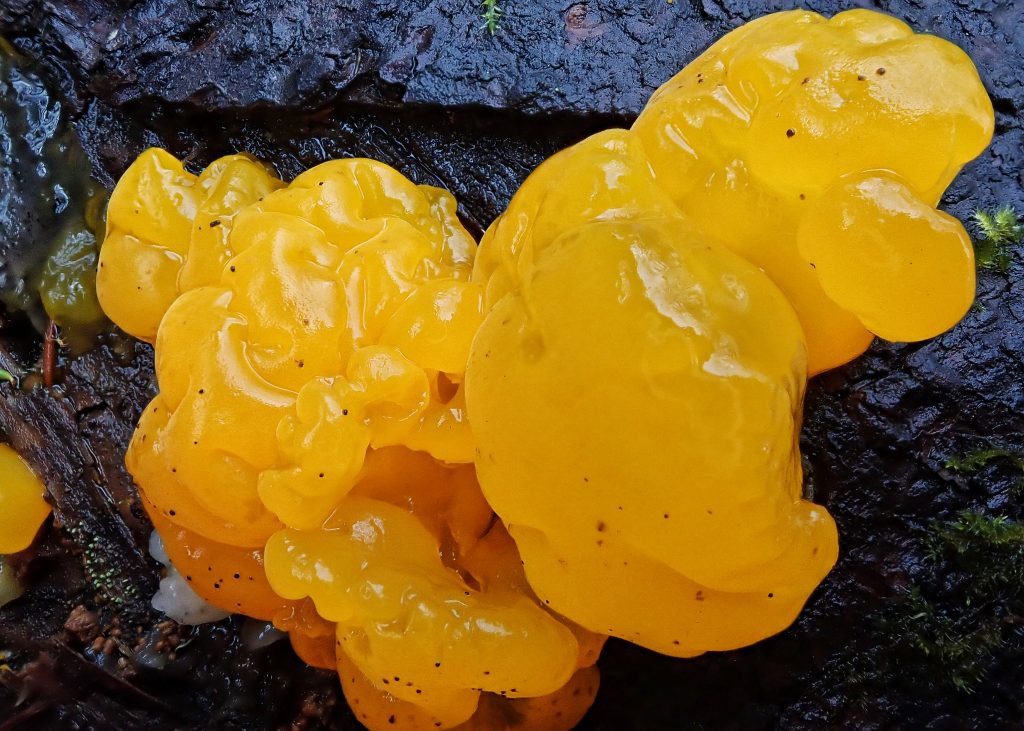
Starting out the new year with a blob, the bright orange yellow fungi Dacrymyces chrysospermus. My nbo Morgan and I were just a few minutes into our hike when they exclaimed, “What the hell is that?” I turned from whatever I was examining, which was immediately forgotten when I spied the object of their curiosity. “Witches’ Butter” I excitedly, confidently, and semi-incorrectly stated, and rushed over to examine and photograph it.

Excitedly because this stuff is just cool! That bright orange color seems to glow amongst the muted earth tones of a winter forest, and it’s just not a color one sees at this time of year on the forest floor. And, while it does look vaguely organic, it also doesn’t look like something that is actually alive. And it has this slimy, rubbery texture, that just brings out my sense of childlike wonder.
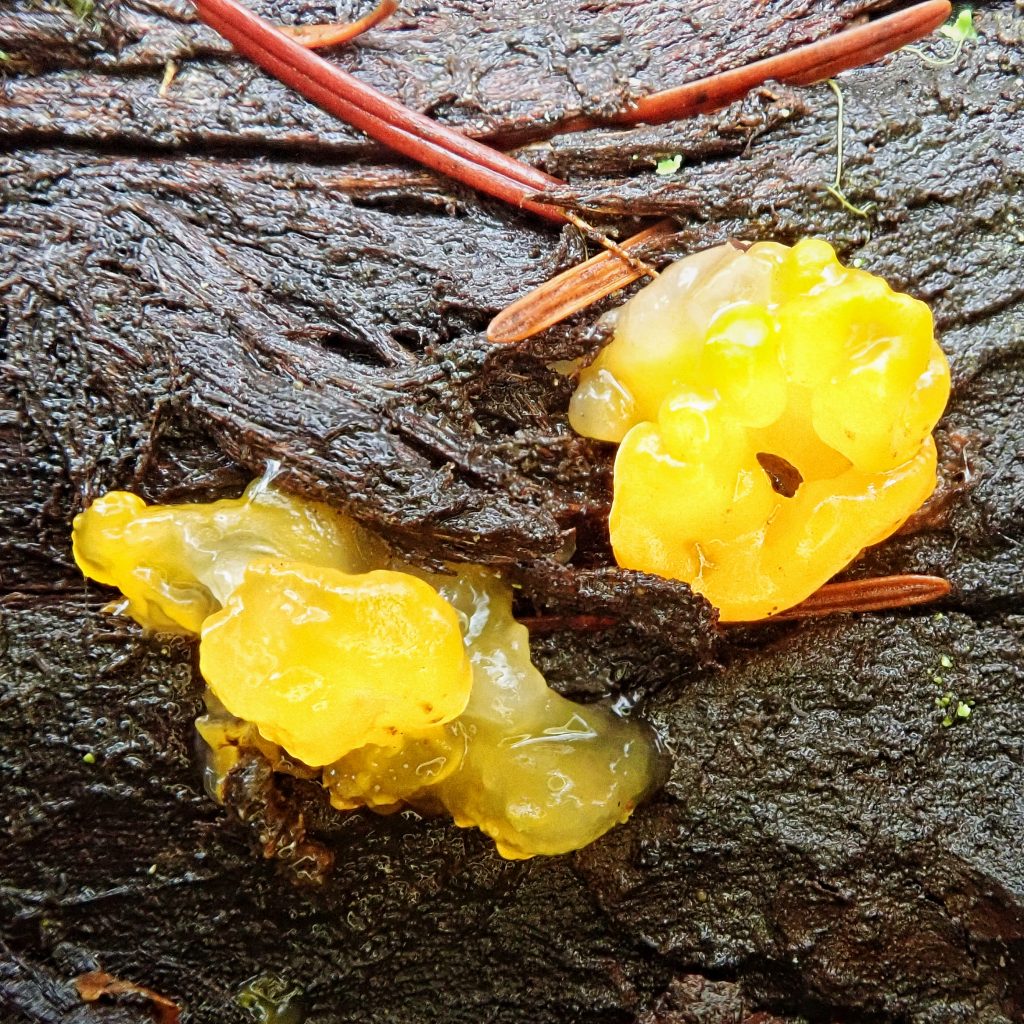
Confidently because there just aren’t many things in our woods that look like this. But semi-incorrectly because there are at least 3 different species in two genera that are commonly called Witches’ Butter (4 and 3 if you count Black Witches’ Butter). The other two are species of Tremella, which are parasitic on Stereum sp. fungus, and are only found on hardwoods.
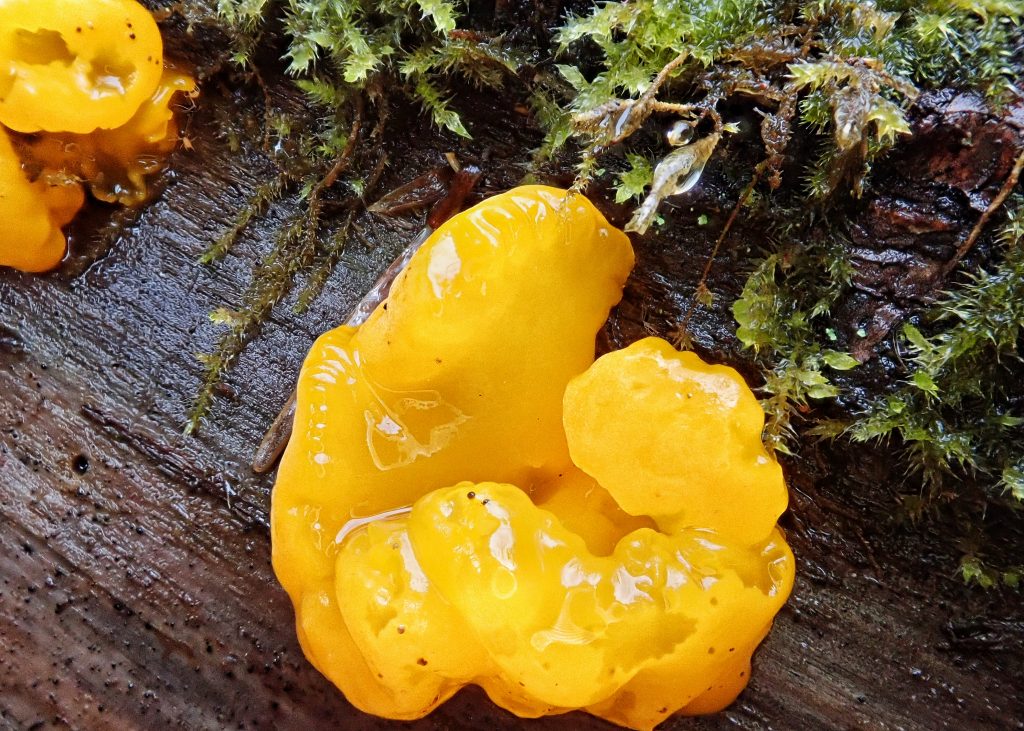
But Dacrymyces chrysospermus grows almost exclusively on dead, usually downed conifers, and is a wood decomposing fungus. Previous to this experience, I now realize, I had only seen this species on stumps. I now realize this because I now know, due to needing a greater level of precision for this blog, that what I had always called Witches’ Butter when I found it growing on alder, was actually Tremella mesenterica.
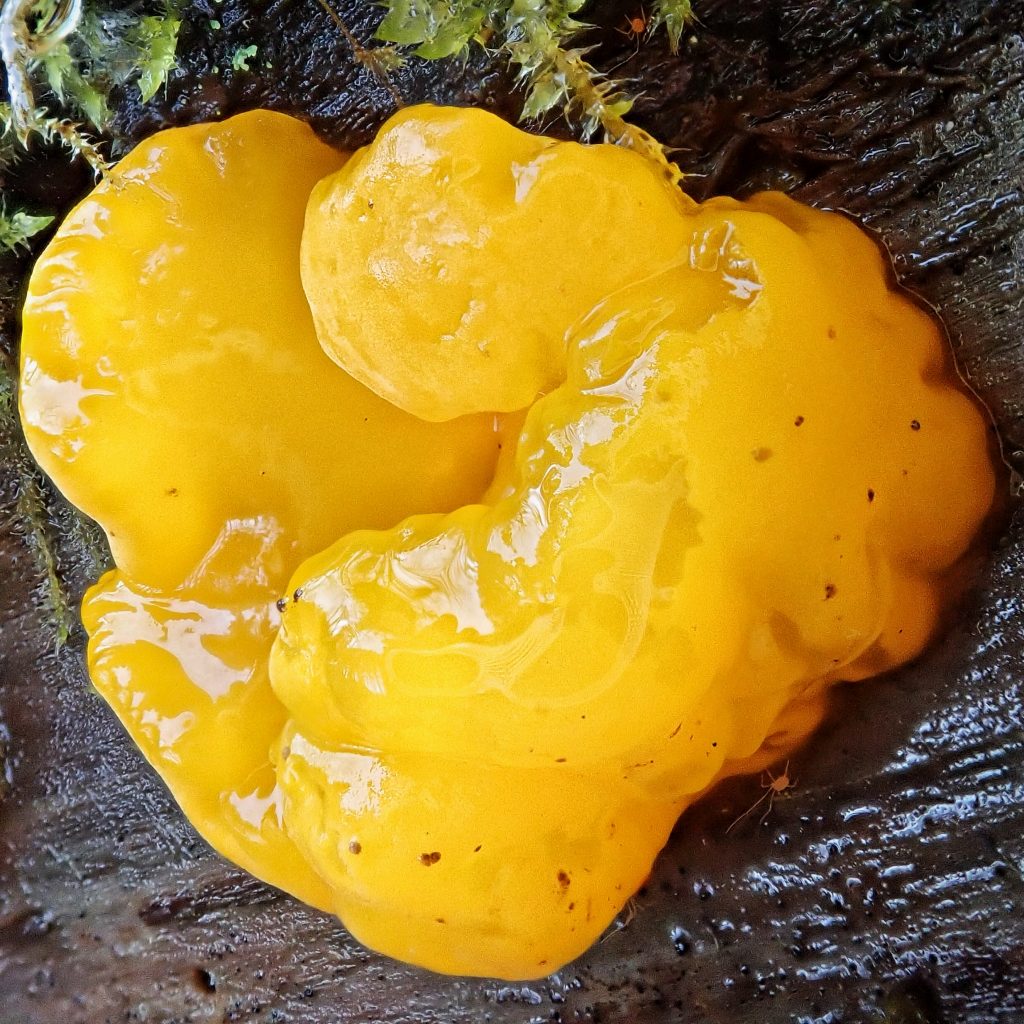
The legend is that witches cursed people by causing this to grow on the hexed one’s gate. The curse could only be lifted by piercing the fungus with a sharp stick. Me, I count it as a blessing every time I see these bright, cheery, colorful, blobs adorning a log in the forest.
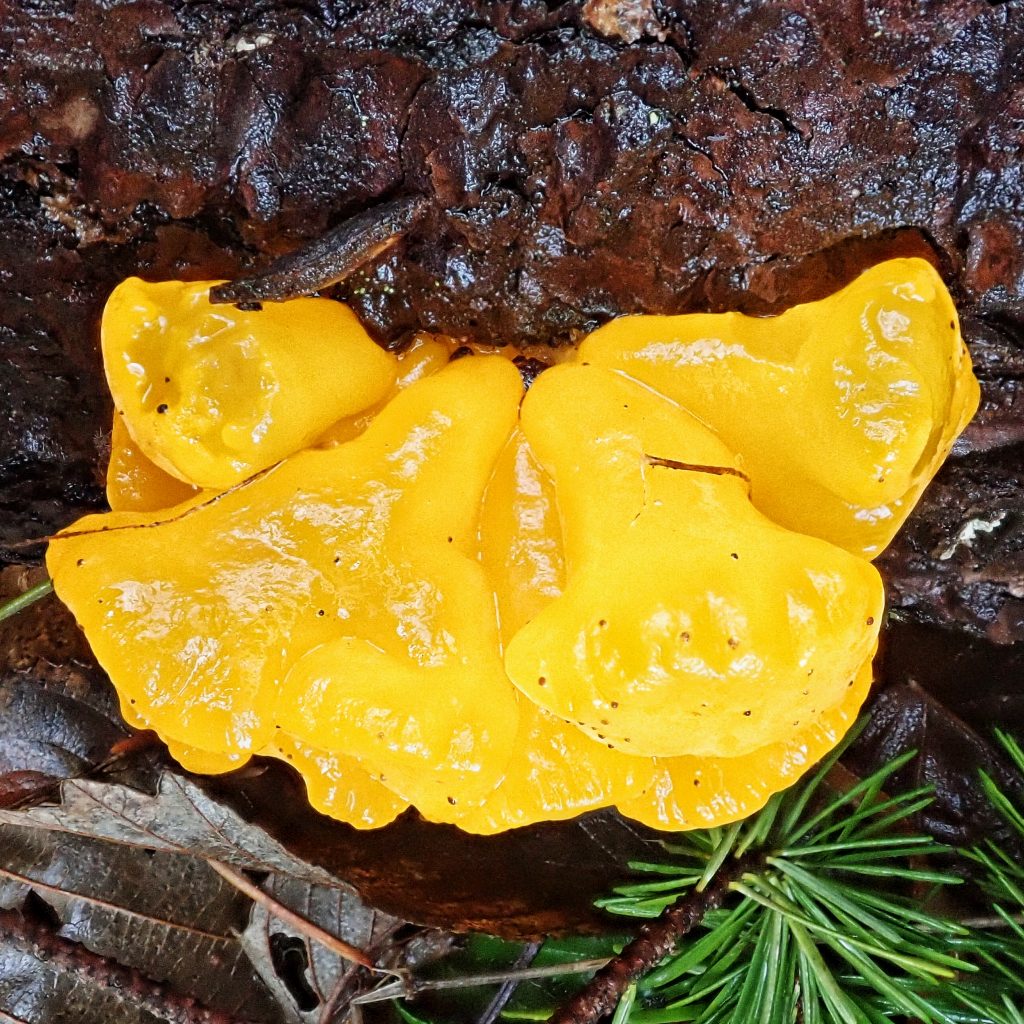
Description– Orange to yellow, relatively firm, jelly fungus; can be up to 6cm across; folded, lobed, irregular rounded, brain like, or fan like clumps;
Similar species– Dacrymyces stillatus is smaller, and more simple in form, usually being dots to formless globs. Tremella mesenterica is parasitic on Stereum sp. fungus, and is primarily found on hardwoods with bark, usually alder, oak, or maple. But it has, rarely, been found on conifers.
Habitat– Dead, usually downed, usually barkless (decorticated) conifers.Edited to amend- One of my readers with a mycological background states that he has found this on alder also.
Range-Region wide in appropriate habitat
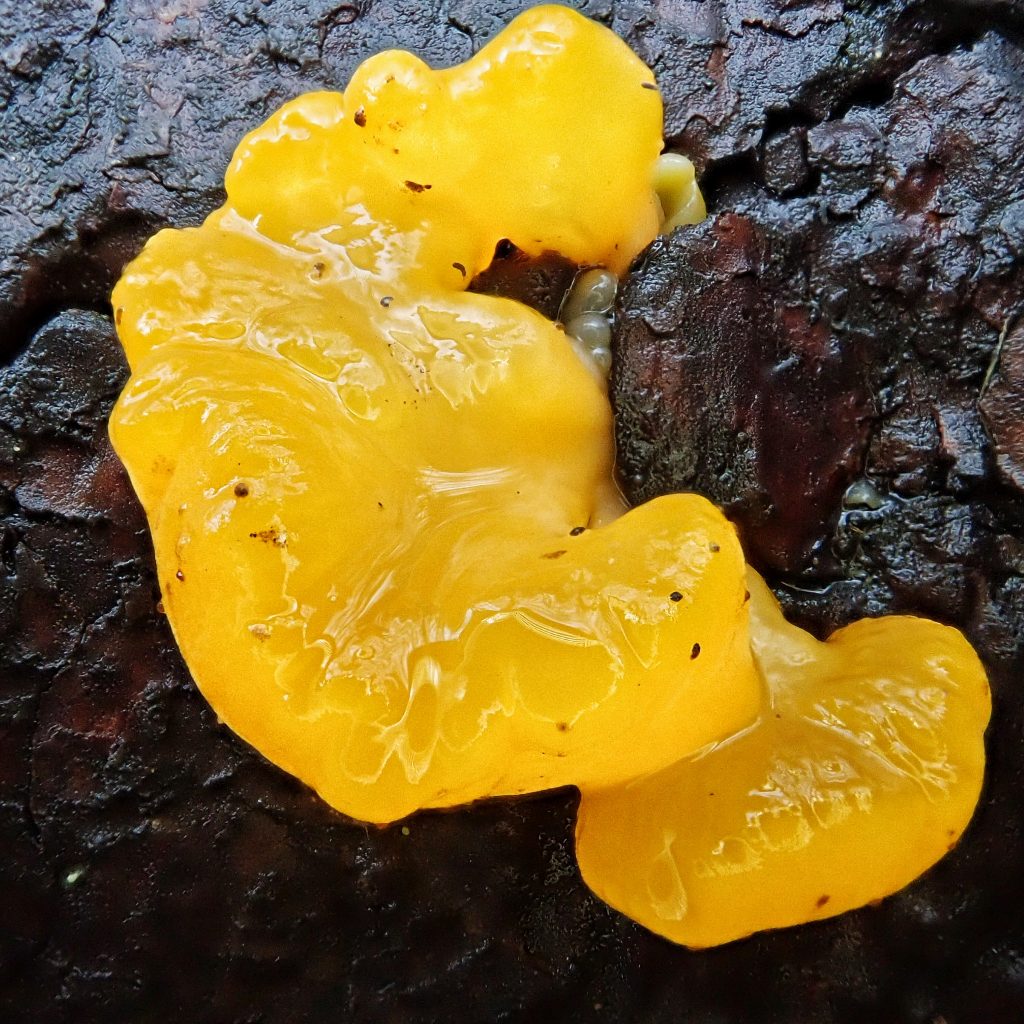
Reproductive timing– Winter-spring
Eaten by-Many species of slugs and snails dine on this species. It is considered to be edible but tasteless for humans. It is being studied for the treatment of respiratory and circulatory ailments, as well as possible use in cancer treatment.
Etymology of names–Dacrymyces is from the Greek, and means ‘teardrop fungus’, a reference to the appearance of the fruiting bodies of members of this genus when they are recently formed. The species epithet chrysospermus is also from the Greek, and means ‘golden spored’, which is apparently accurate for this species when spores are massed in clumps.
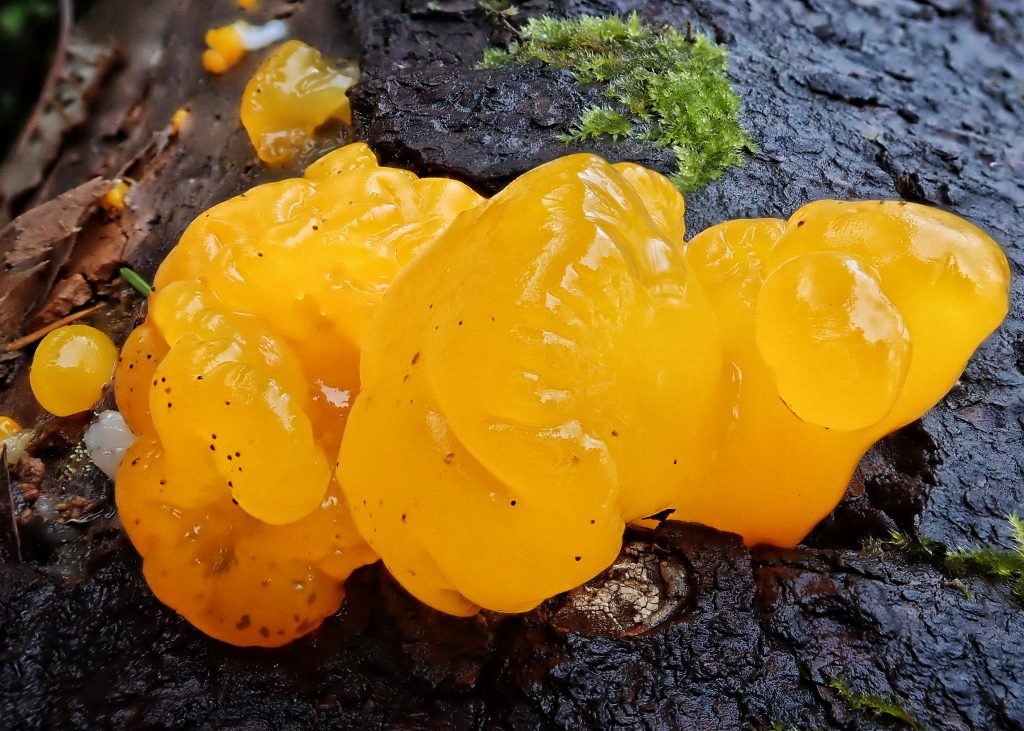
https://www.mykoweb.com/CAF/species/Dacrymyces_chrysospermus.html
https://www.first-nature.com/fungi/dacrymyces-chrysospermus.php
https://www.marylandbiodiversity.com/viewSpecies.php?species=10397
👍🤩
Saw this on my hike today! 😊 And, happy to know about it!!! Thanks!